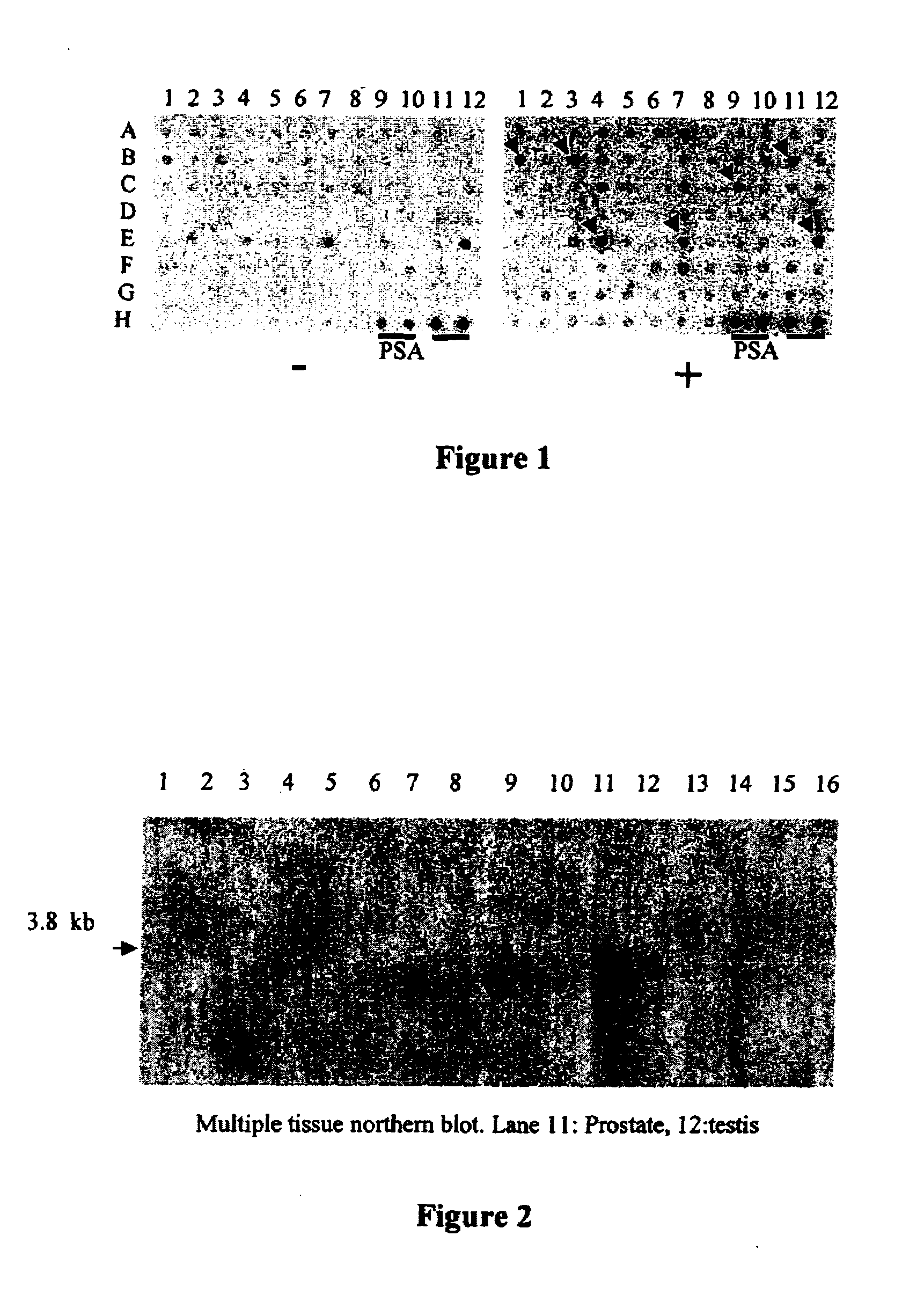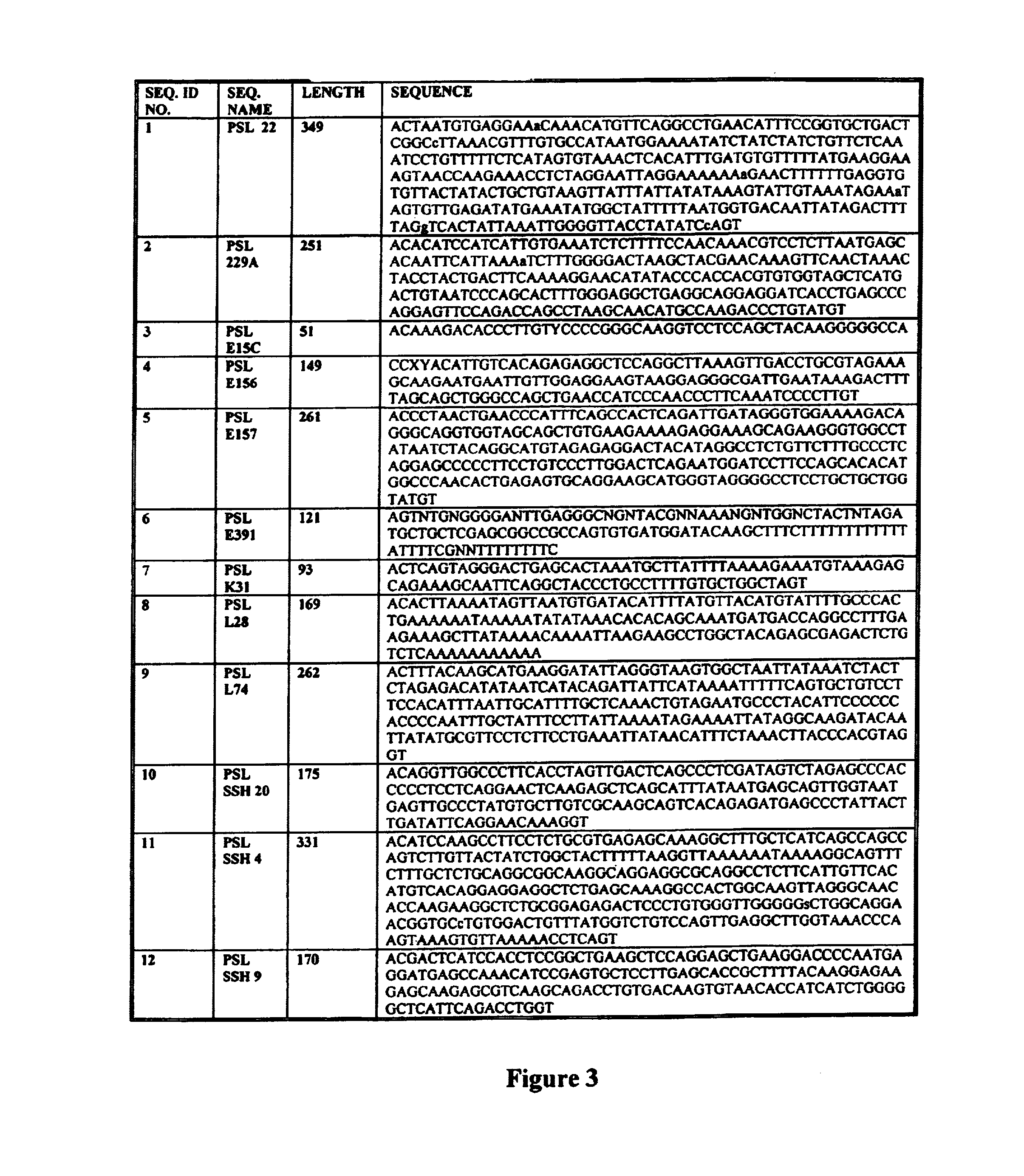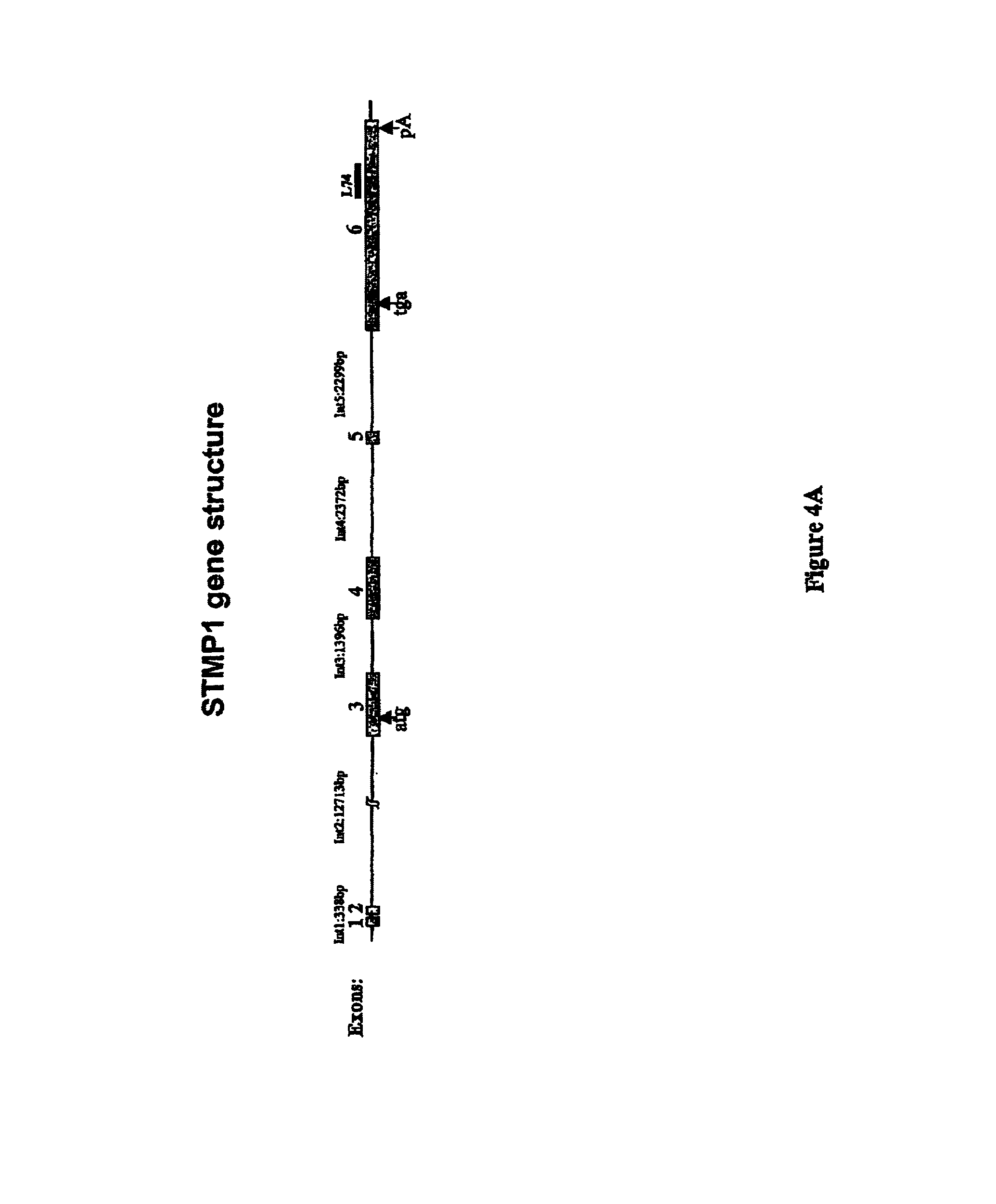Prostate-specific or testis-specific nucleic acid molecules, polypeptides, and diagnostic and therapeutic methods
a nucleic acid and prostate cancer technology, applied in the field of prostate-specific or testis-specific nucleic acid molecules, polypeptides, diagnostic and therapeutic methods, can solve the problems of prostate cancer progressing to an androgen-dependent phenotype, no effective treatment available, and difficult diagnosis and treatment of genital disorders
- Summary
- Abstract
- Description
- Claims
- Application Information
AI Technical Summary
Benefits of technology
Problems solved by technology
Method used
Image
Examples
example 1
Suppression Subtraction of Prostate- and Testes-Specific Genes and Subcloning Into Pzero
[0154]cDNA derived from poly(A)+ RNA of 10 different normal human tissues were subtracted against normal human prostate cDNA using suppression subtraction hybridization (SSH) (Diatchenko, L. et al., Proc. Natl. Acad. Sci. USA 93, 6025–6030, 1996) and the resulting cDNA fragments were cloned into an appropriate vector. SSH was performed as described (Clontech PCR-Select Cloning Kit) using prostate poly(A)+ RNA against a pool of poly(A)+ RNA obtained from ten normal human tissues (heart, brain, placenta, lung, liver, skeletal muscle, kidney, spleen, thymus, and ovary). Upon secondary PCR amplification (12 cycles), the reactions were extracted with phenol / chloroform, the DNA with ethanol, and the pellets washed once with 70% ethanol. After drying, the DNA pellet was dissolved in 0.2XTE or MQ dH2O and cut with RsaI in a 20 μl reaction for 2 hrs at 37° C. to excise adaptors. After digestion, the react...
example 2
Reverse Northern Blot and Sequence Analyses
[0156]To clone androgen-responsive genes represented in the PSL, the reverse northern technique was used (Hedrick, S. M. et al., Nature 308, 149–153, 1984; Sakaguchi, N. et al., EMBO J. 5: 2139–2147, 1986). In this procedure, RNA made from two populations of cells that are to be compared is used to make cDNA probes that are then hybridized to two identical arrays of clones. To that end, PSL clones were amplified by PCR and spotted on nylon filters in 96-well format to generate two identical blots for each set of 92 clones (the remaining four spots were used for positive and negative controls). To make the probes, the androgen-responsive prostate cancer cell line LNCaP was used (Horoszewicz, J. S. et al., Cancer Res. 43, 1809–1818, 1983) and was either left untreated (the (−) probe) or treated with the synthetic androgen R1881 for 24 hours (the (+) probe). Poly(A)+ RNA was isolated from these cells and was used to make the 32P-labeled probes...
example 3
Isolation and Characterization Of The STMP1 Gene And mRNA
[0160]A normal prostate cDNA library was screened by 5′- and 3′-RACE analysis, and resulted in the full-length cDNA for L74. Since computer-aided secondary structure prediction of the deduced amino acid sequence of L74 suggested the presence of a six-transmembrane domain in its C-terminal half, L74 was renamed Six-Transmembrane Protein of Prostate 1 (STMP1).
[0161]When the full-length STMP1 cDNA was used in BLAST analysis, it was found to match a BAC clone (GenBank accession # AC002064) except for a 313 bp repetitive unit in the 3′ UTR region, thereby identifying it as the STMP1 gene and localizing it to Chr7q21. The repetitive region is likely to be a cloning or sequencing artifact of the BAC clone. Computational exon / intron junction analysis and alignment of the full-length cDNA sequence with the BAC clone revealed that STMP1 gene is composed of six exons and five introns (FIG. 4A). The transcription start site, the location ...
PUM
 Login to View More
Login to View More Abstract
Description
Claims
Application Information
 Login to View More
Login to View More - R&D
- Intellectual Property
- Life Sciences
- Materials
- Tech Scout
- Unparalleled Data Quality
- Higher Quality Content
- 60% Fewer Hallucinations
Browse by: Latest US Patents, China's latest patents, Technical Efficacy Thesaurus, Application Domain, Technology Topic, Popular Technical Reports.
© 2025 PatSnap. All rights reserved.Legal|Privacy policy|Modern Slavery Act Transparency Statement|Sitemap|About US| Contact US: help@patsnap.com



